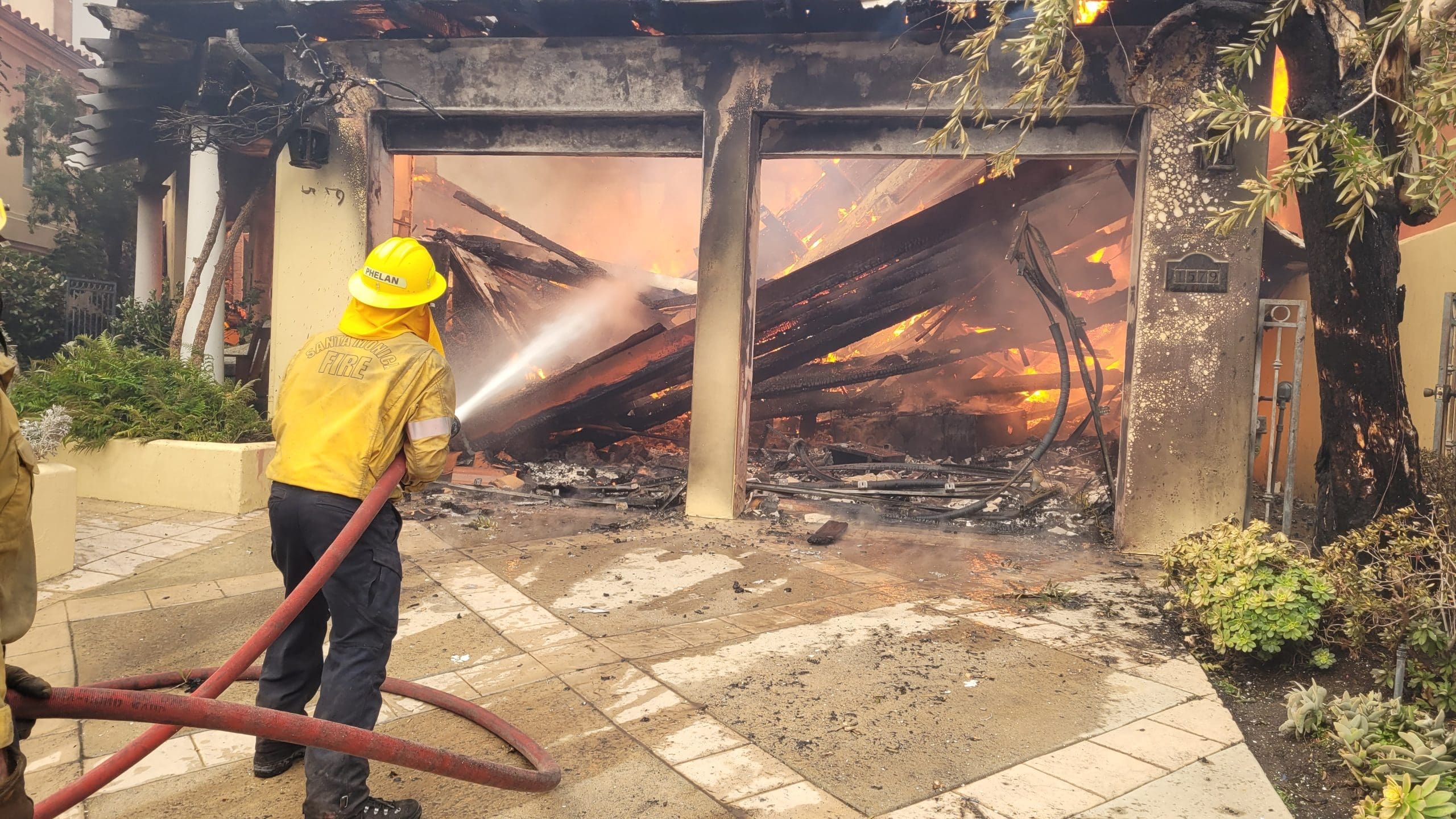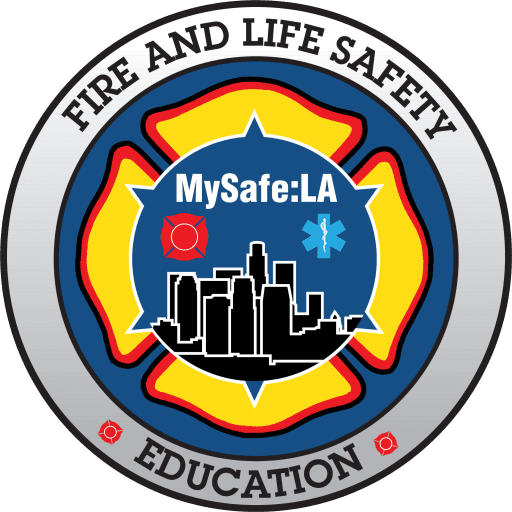As the flames are snuffed out, essential questions need to be answered about getting back to your property and starting to recover. The most important thing we can share is to reinforce that what has occurred is a significant disaster. This is a bigger issue than the Northridge Earthquake or the 1961 Bel Air Fire. The size and scope of this disaster mean that each step of the recovery process is more complicated than an “ordinary” wildfire recovery process.
WHO CAN RETURN TO THEIR HOME?
In areas where there was no damage from any source (fire, wind, etc.), once evacuation orders are downgraded, it’s very likely that if you live in one of the zones specified, you’ll be able to return home. The City of Los Angeles utilizes “Zone” mapping, so you’ll need to know the zone you live in. You can quickly and easily find your zone with an application called Watch Duty ( https://www.watchduty.org/ ).
If you wish to approach a checkpoint to re-enter a zone released to re-populate, ensure you have a driver’s license that shows that address on the permit. You may face a challenge if you live elsewhere and rent the home. In that case, bring a utility or other bill with your name and the home address in the evacuation zone.
WHO NEEDS TO WAIT BEFORE GOING BACK TO THEIR PROPERTY?
Everyone yearns to return home, and the waiting can often feel intolerable. It’s natural to question why the process is taking longer than expected. Remember, we are addressing an area that has experienced severe wildfire destruction. Prioritizing the safety of this community after the wildfires necessitates meticulous planning and careful implementation to facilitate a secure recovery.
Let’s delve into the essential steps that must be accomplished before we can safely bring everyone back home.
1. The City of L.A. Must Conduct Initial Assessments
- Fire Containment Confirmation: Confirm the wildfire is wholly contained, with no remaining hotspots that might reignite.
- Damage Assessment: Assess and record the level of damage, emphasizing structural, environmental, and infrastructure impacts.
- Hazard Mapping: Identify locations with urgent hazards, including unstable buildings, fallen power lines, or areas at risk of landslides.
2. Secure Public Infrastructure
- Utility Safety Checks:
- Inspect and repair power lines, transformers, and electrical grids.
- Test gas lines for leaks and shut off damaged sections.
- Assess water systems for contamination or damage and ensure potable water is restored.
- Roadway Clearance: Clear roadways of debris, fallen trees, and any obstacles.
3. Address Environmental Hazards
- Air Quality Monitoring: Evaluate and address the adverse impacts of smoke and ash on air quality, issuing advisories when needed.
- Soil and Water Testing: Inspect soil and water sources, including wells, for contamination to avoid long-term health hazards.
- Wildlife Management: Manage displaced wildlife that may threaten human safety.
4. Secure and Stabilize the Area
- Hazard Removal: Remove urgent threats like debris, unsafe materials, and unstable trees or buildings.
- Establish Perimeter Control: Establish barriers or patrols to limit entry into hazardous areas.
- Erosion and Flood Prevention: Use sandbags, wattles, or barriers for erosion control to avert landslides and flash floods.
5. Communicate with the Public (All of you!)
- Regular Updates: The City and the Incident Management Team (IMT) should provide transparent and frequent updates about recovery progress and anticipated timelines for repopulation.
- Clear Guidelines: Outline safety protocols for residents returning, including access to emergency services, utilities, and restricted zones.
HOW LONG WILL THIS TAKE?
This is a multi-million dollar question. Because of the vast scale of destruction, it will take a bit of time. MySafe:LA isn’t involved in recovery, and we don’t wish to share incomplete information. At the same time, we do want to answer your questions. Our most recent information is that the process listed above is underway. Typically, preparing a community for repopulation might take approximately a week. In this case, it might take a little longer. REMEMBER: The process above is designed to protect your health and safety.
HOW WILL REPOPLATION WORK?
The key to any repopulation effort is to ensure your safety. That means avoiding traffic madness (which is already a thing in some of these areas daily). As noted elsewhere, your community is divided into “evacuation zones.” Often, when a community is repopulated, it will be done in one or two zones at a time, depending on the number of people and properties involved. This process typically evolves rapidly, so once the initial orders are given, be ready. As noted herein, you must prove that you live within the zone identified. Unfortunately, there are “bad actors” who like to use disasters to further their interests, and several people have already been arrested for looting.
I NEED MORE INFORMATION!
There are several different places to get information. Your HOA may offer daily or weekly updates. The City of Los Angeles, CAL FIRE, and FEMA all have websites and helpful information. Most of you likely already have that information. In our next email outreach, we’ll list several resources to assist you.
In the meantime, you can visit the following two links to get started:
RECOVERY: https://www.wildfirela.org/recovery/
REBUILD:LA: https://www.wildfirela.org/rebuildla/
WHAT CAN I DO WHILE I’M WAITING TO GO HOME?
During the wait for approval to repopulate an area following a catastrophic wildfire, like the 2025 Palisades wildfire, individuals can use this time effectively to prepare themselves for returning home, aid recovery efforts, and prioritize their well-being.
Here are key suggestions:
1. Address Immediate Needs
- Secure Temporary Shelter: Make sure your family has a secure and cozy place to wait for clearance. Most of you have already done this.
- Access Assistance: Contact local or federal disaster relief organizations (such as FEMA or the Red Cross) for financial support, temporary accommodations, or additional resources. Don’t wait—do this now.
- Maintain Contact: Keep up to date with repopulation news via local news outlets, government websites, or community alerts.
2. Plan for Returning Home
- Review Insurance Policies: Collect and examine insurance documents regarding possible claims. Contact your provider for advice on how to proceed.
- Document Losses: Create a list of items that could have been damaged or lost to aid insurance claims.
- Prepare Supplies: Include gloves, masks, cleaning supplies, and tools for home inspection and post-return cleanup.
- Create a Checklist: When you return, create a prioritized checklist of tasks to tackle, including evaluating damage, inspecting utilities, and safeguarding valuables.
3. Stay Engaged with Recovery Efforts
- Volunteer Locally: When it’s safe and practical, help with recovery efforts, like delivering supplies or supporting shelters. This can help you pass the time and keep you busy, and you’ll be helping your neighbors, too.
- Donate to Relief Funds: If you can afford to, contribute to funds supporting others impacted by the wildfire.
- Support Neighbors: Contact community members in need, especially the elderly or vulnerable, to provide emotional or logistical assistance.
4. Care for Your Well-Being
- Focus on Mental Health: Recognize the stress of the situation and, if necessary, seek professional counseling or support groups.
- Engage in Mindful Activities: Engage in mindfulness, journaling, or calming activities to alleviate anxiety.
You can always contact us at info@mysafela.org. As always, please share this information with anyone who may need it.









